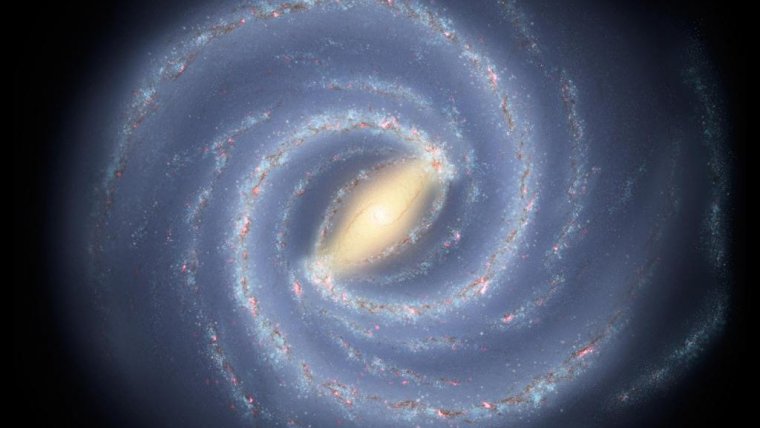| News / Space News |
Stars Found Far from Galaxy Center
JPL/NASA | MARCH 3, 2015
Astronomers using data from NASA's Wide-field Infrared Survey Explorer, or WISE, have found a cluster of stars forming at the very edge of our Milky Way galaxy.

The newfound young star clusters lie thousands of light-years below the plane of our Milky Way galaxy, a flat spiral disk seen in this artist's conception. ![]()
The Milky Way, the galaxy we live in, has a barred spiral shape, with arms of stars, gas and dust winding out from a central bar. Viewed from the side, the galaxy would appear relatively flat, with most of the material in a disk and the central regions.
Using infrared survey images from WISE, the team discovered two clusters of stars thousands of light-years below the galactic disk. The stars live in dense clumps of gas called giant molecular clouds.
This is the first time astronomers have found stars being born in such a remote location. Clouds of star-forming material at very high latitudes away from the galactic plane are rare and, in general, are not expected to form stars.
YOU MAY ALSO LIKE

